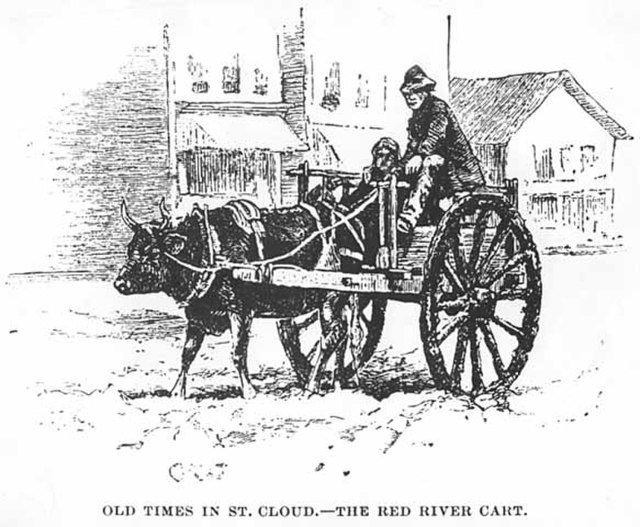Traverse des Sioux is a historic site in the U.S. state of Minnesota. Once part of a pre-industrial trade route, it is preserved to commemorate that route, a busy river crossing on it, and a nineteenth-century settlement, trading post, and mission at that crossing place. It was a transshipment point for pelts in fur trading days, and the namesake for an important United States treaty that forced the Dakota people to cede part of their homeland and opened up much of southern Minnesota to European-American settlement.
Minnesota River at Traverse des Sioux
View from camp, Traverse des Sioux, July 24, 1851Frank Blackwell MayerThe Minnesota River valley, a canoe or boat on the river, cabins, a tipi, Indians, and traders are shown.
Traverse des Sioux campFrank Blackwell Mayer, 1851.
The Red River Trails were a network of ox cart routes connecting the Red River Colony and Fort Garry in British North America with the head of navigation on the Mississippi River in the United States. These trade routes ran from the location of present-day Winnipeg in the Canadian province of Manitoba across the Canada–United States border, and thence by a variety of routes through what is now the eastern part of North Dakota and western and central Minnesota to Mendota and Saint Paul, Minnesota on the Mississippi.
Métis drivers and ox carts at a rest stop
Fur trader and cart train operator Norman Kittson
An ox cart seen at the end of the trail in Saint Paul
Red River cart at Saint Cloud







